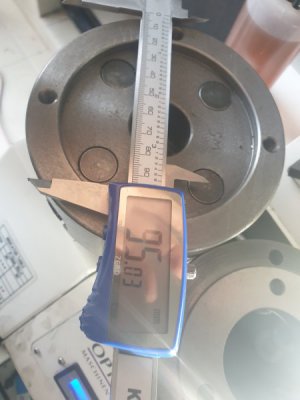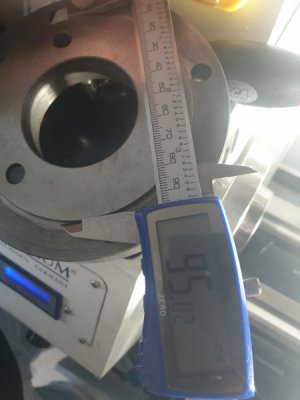Hi all ,new here,i did a introduction post the other day , pretty much long time boilermaking, astronomy hobbyist, picked up lathe recently, interested in gear making/hobbing and threading.
I see a lot of talk about thou , thousands of an inch giving that there are charts available ,as i hobbyist in the metric system primarily ,do i even need to learn thousands ?
even thousands can be converted to a decimal in inches ?.
can i learn without this system, are there books available learning channels?
I inserted some pictures in metric mm measurements, this was my backplate i had to machine down to fit the new 4 jaw chuck, what is the clearance in thousands between the two ? is this a good fit for a back plate haha ?
google says 0.01mm = (0.3937008 thousands)?
i also founds this chart online that says 1 thou = 0.0254 mm.. confusing..
edit: i got it i think, i'm at almost 1/2 a thousands with the fit ? 0.5 thousands
I see a lot of talk about thou , thousands of an inch giving that there are charts available ,as i hobbyist in the metric system primarily ,do i even need to learn thousands ?
even thousands can be converted to a decimal in inches ?.
can i learn without this system, are there books available learning channels?
I inserted some pictures in metric mm measurements, this was my backplate i had to machine down to fit the new 4 jaw chuck, what is the clearance in thousands between the two ? is this a good fit for a back plate haha ?
google says 0.01mm = (0.3937008 thousands)?
i also founds this chart online that says 1 thou = 0.0254 mm.. confusing..
edit: i got it i think, i'm at almost 1/2 a thousands with the fit ? 0.5 thousands




 )
)